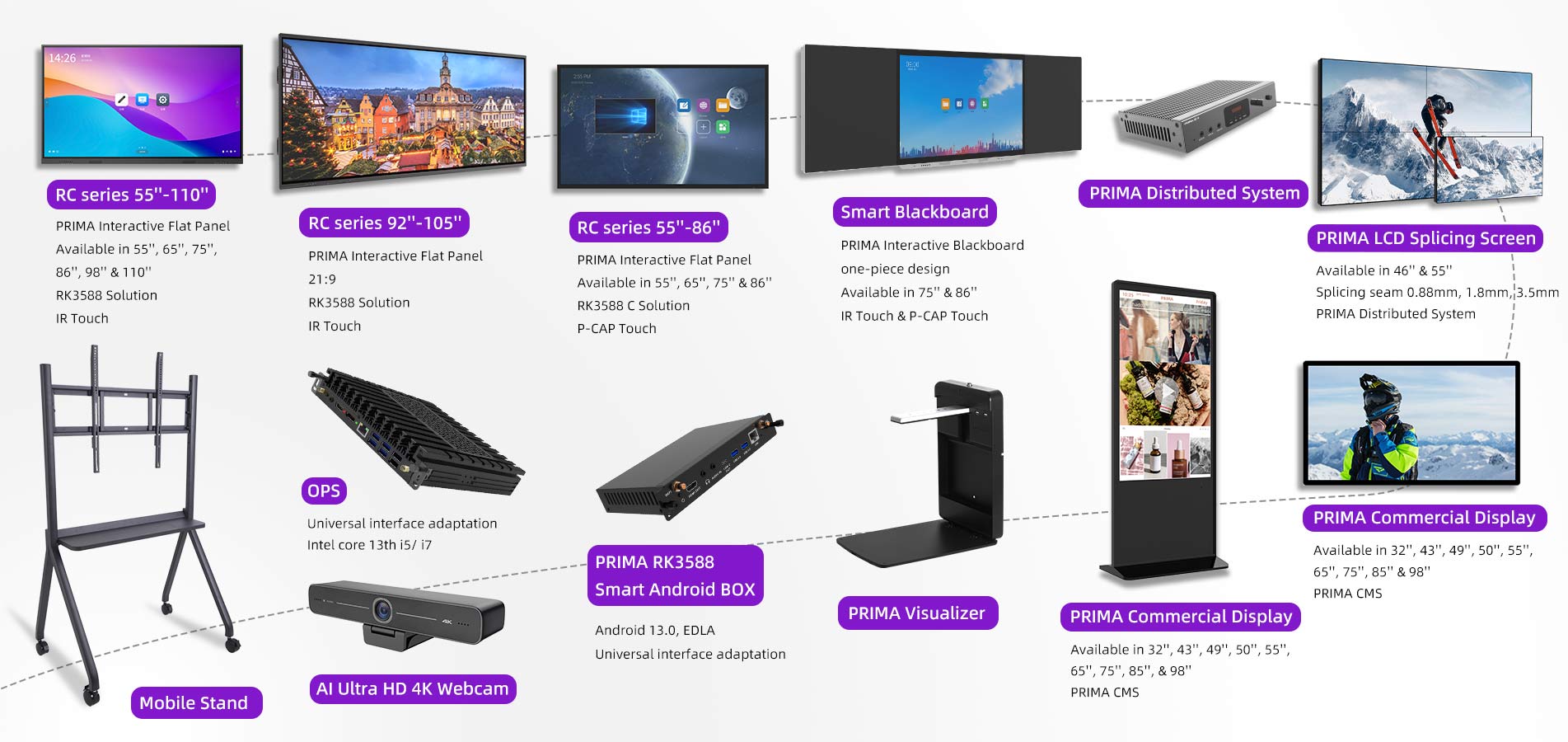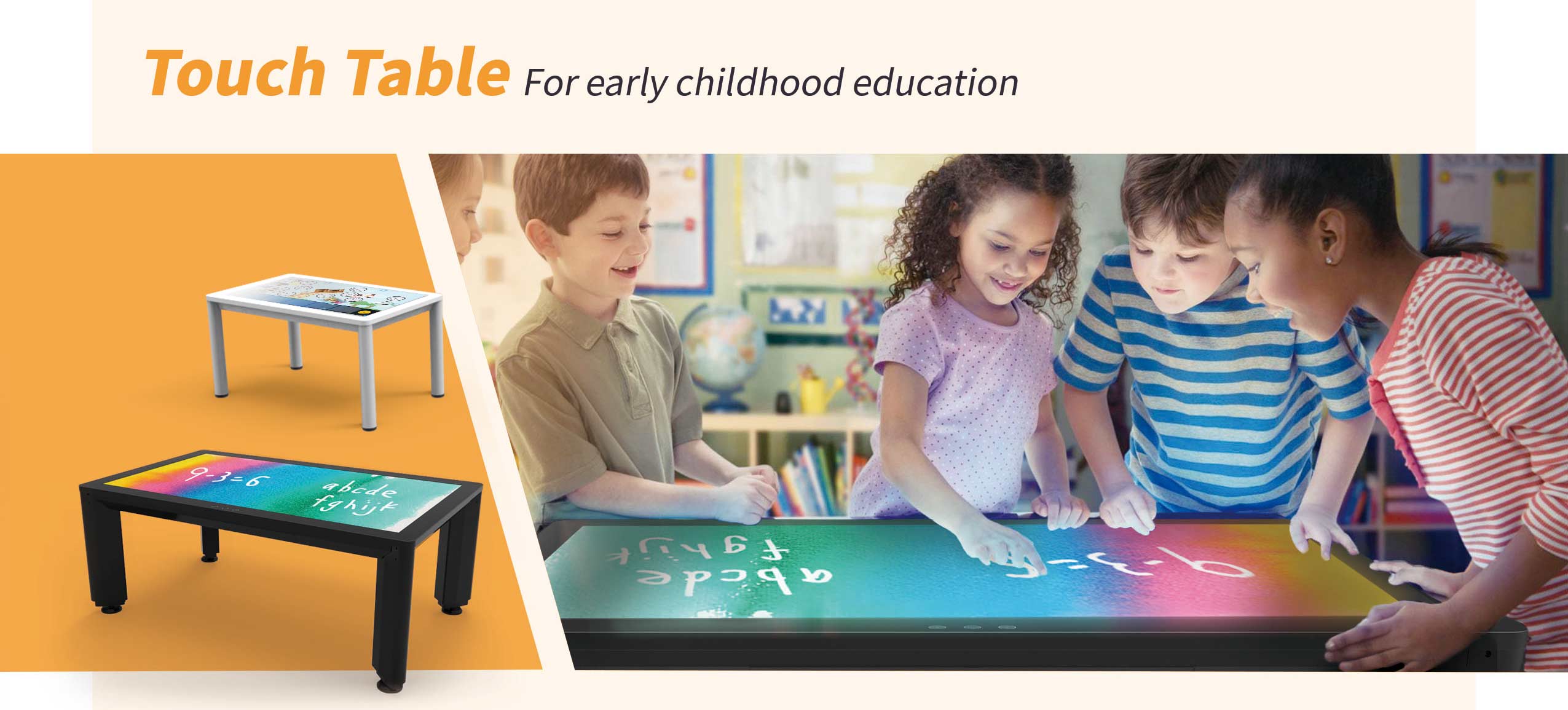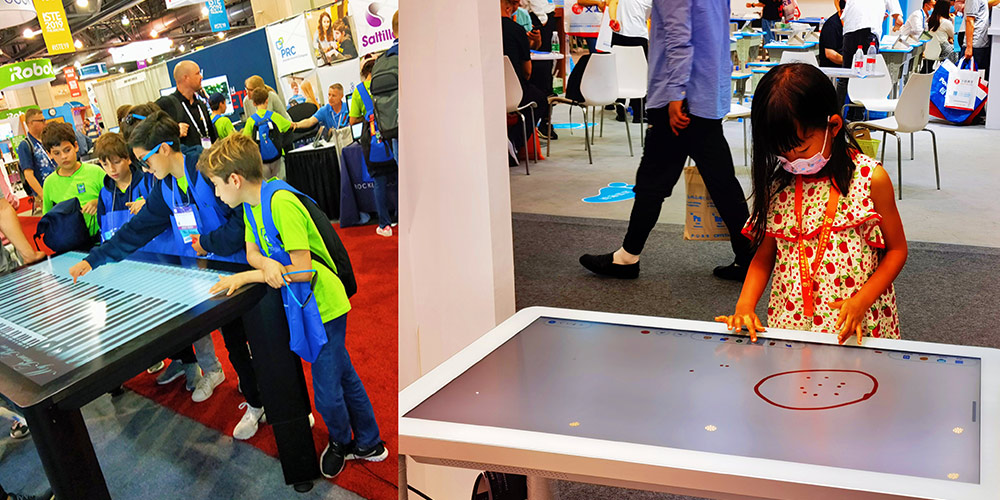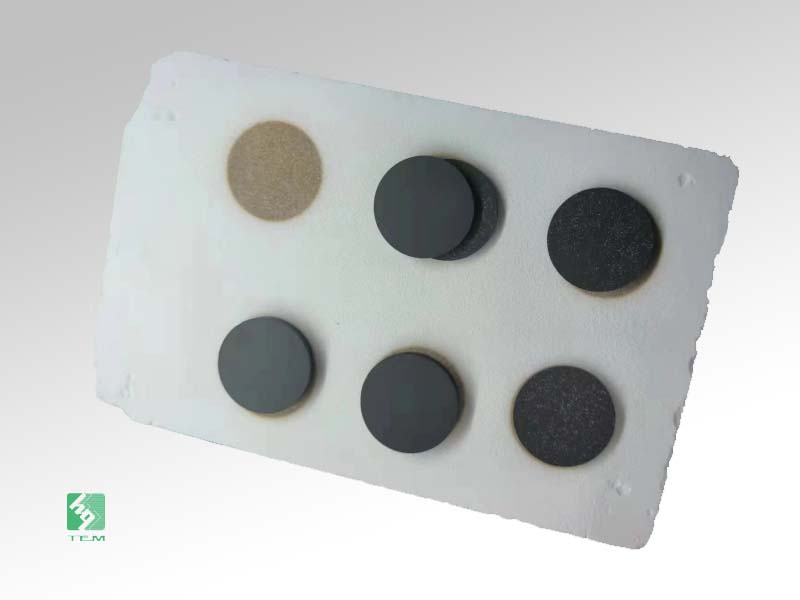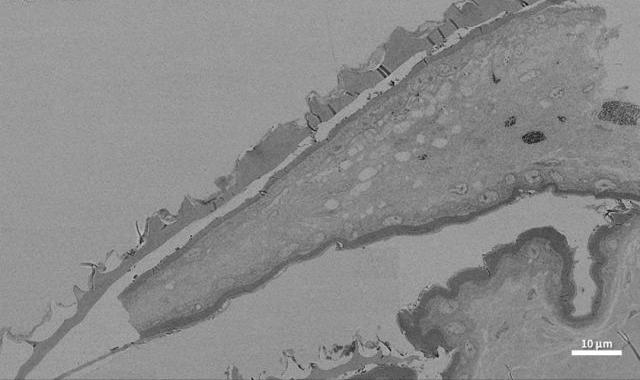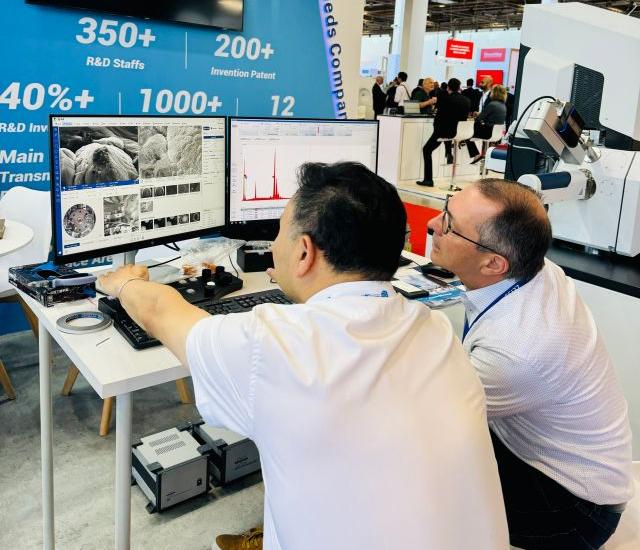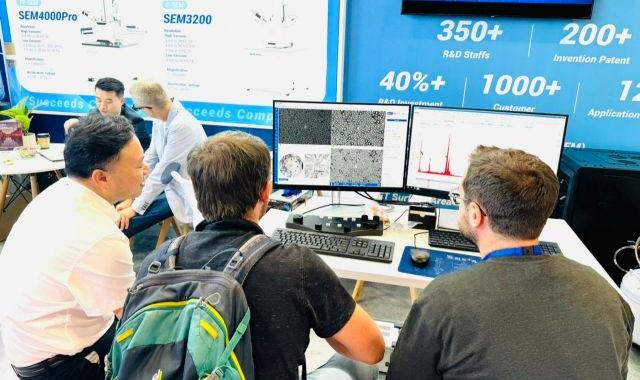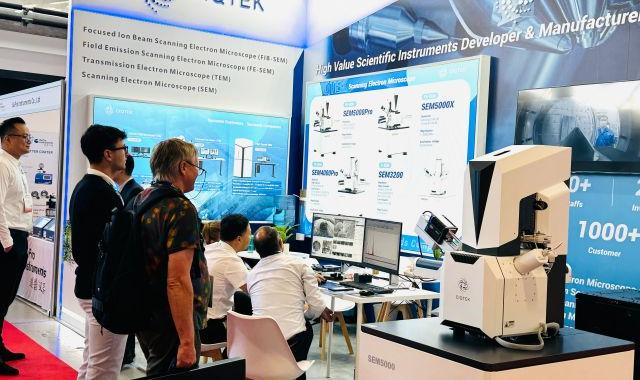Stand Out from the Crowd Explore Top-Tier Commercial Display Options!
Commercial display products and solutions are widely used in modern society, enhancing the efficiency of business information dissemination and greatly enriching marketing tools. Here are some common commercial display products and their corresponding solutions:
Interactive Flat Panels:
- Application Scenarios: Corporate meeting rooms, classrooms, design studios, etc.
- Solutions: Enable handwriting notes, drawing, screen sharing, etc., fostering team collaboration and creative ideation. Supports multiple interfaces such as USB, HDMI, etc., for easy connection to various devices.
Digital Signage Systems:
- Application Scenarios: Retail stores, hospitals, hotels, corporate lobbies, etc.
- Solutions: High-definition screens display commercial information, advertisements, announcements, etc. Content management systems allow for remote uploading and scheduling of playback content, ensuring messages are up-to-date.
LCD Splicing Screens:
- Application Scenarios: Large malls, public spaces, control rooms where large-scale display is needed.
- Solutions: Multiple LCD screens are combined into a large display wall, seamlessly showing large images and videos. Suitable for advertising displays, real-time monitoring, etc.
LED Large Screen Displays
- Application Scenarios: Outdoor advertising, sports venues, concerts, etc.
- Solutions: High-brightness, large-size LED displays suitable for viewing at a distance and outdoor use. Customizable screen sizes and shapes, as well as high-resolution displays, are supported.
Interactive Touch Screens
- Application Scenarios: Museums, exhibition halls, educational institutions, etc.
- Solutions: Touch screen technology provides interactive access to information, enhancing user experience. Supports multi-touch, recognizing input from multiple users simultaneously, ideal for group interaction and learning.
Information Release Systems
- Application Scenarios: Campus, airports, train stations, building elevator areas, etc.
- Solutions: A centralized management platform is established for networked display devices to manage and distribute information, supporting video, pictures, text, and other formats.
Transparent OLED Display Screens
- Application Scenarios: Window advertising, exhibition displays, high-end retail stores, etc.
- Solutions: Utilizing transparent OLED technology, the screen can serve as a display medium without obstructing the view behind it, suitable for creative displays and advertising.
Virtual and Augmented Reality Displays
- Application Scenarios: Real estate showcases, educational simulations, gaming entertainment, etc.
- Solutions: Through VR and AR technologies, provide visual experiences beyond reality, used for product demonstrations, virtual tours, and more.
These commercial display products and solutions play a crucial role in improving the efficiency of information communication, enhancing customer interactive experience, and elevating the level of modernization in venues. Selecting appropriate display technology and customized solutions can greatly enhance the professionalism and customer satisfaction of a commercial environment.

